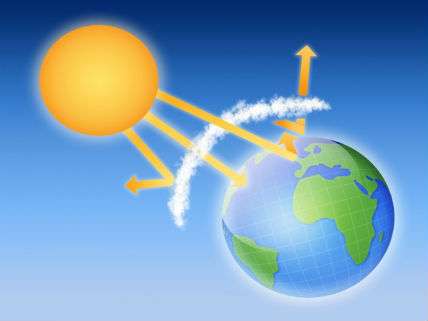Global Warming Scaled Back, Say Two New Studies
Climate models may be running 2 to 4 times too hot

Last year was the hottest year in the surface temperature record according to the National Oceanic and Atmospheric Administration (NOAA). In contrast, 2015 was the third warmest year according to the satellite temperature record. Given record breaking heat in the first few months of 2016, NOAA is now projecting that there is a 99 percent chance that the current year will be the hottest on record—basically about 1.5 degrees Celsius above the 1891-1910 baseline. The 1.5 degree Celsius increase is significant because last December the nations of world agreed at Paris U.N. climate change conference to try to keep future average temperatures below that threshold.
A strong El Nino which greatly warms the Eastern Pacific Ocean is responsible for boosting average global temperatures in the past year. That phenomenon is now abating and may soon be replaced by a La Nina which will dramatically cool the waters of the Eastern Pacific and drag down the global average. Clearly natural variations in temperature can and do drive temperature trends in the short-run, but what about the long-run?
Two new studies look at the long-run projections of climate computer models and suggest that they are running too hot. One critical parameter is equilibrium climate sensitivity, which is conventionally defined as the amounf of warming that can be expected from doubling atmospheric carbon dioxide. In the current issue of the journal, Earth and Space Science, mathematician J. Ray Bates, from the Meteorology and Climate Centre at the University College Dublin, calculates climate sensitivity focusing specifically the meteorological dynamics in the tropics that are mostly ignored in climate models. Basically, the tropics are more effective at expelling extra heat into space than the models project.
The Intergovernmental Panel on Climate Change widened its range of climate sensitivity estimates to 1.5 to 4.5 degrees Celsius in its latest report, dropping the lower bound from 2 degrees. The new study suggests that climate sensitivity could be much the lower, about 1 degree C for doubling atmospheric carbon dioxide. If this were true, then the climates models are proejcting future temperarture increases that are 2 to 4 times hotter than the actual likely trend. It is worth noting that the satellite data find that the global rate of temperature increase since 1979 has been +0.12 degree Celsius per decade which suggests that the lower estimates of climate sensitivity may be correct.
Another study published in Nature by the researchers at European Center for Nuclear Research, or CERN finds that the world was much cloudier in the pre-industrial age than previously thought. The researchers suggest that a cloudier world was a cooler world. Computer climate models assume that man-made atmospheric pollutants like sulfur dioxide have increased modern cloudiness which has further shielded the planet from higher temperatures. If it turns out that early eras were somewhat cloudier than represented in the models that means that future warming has again been overestimated.
But always remember: The science is settled!


Show Comments (122)